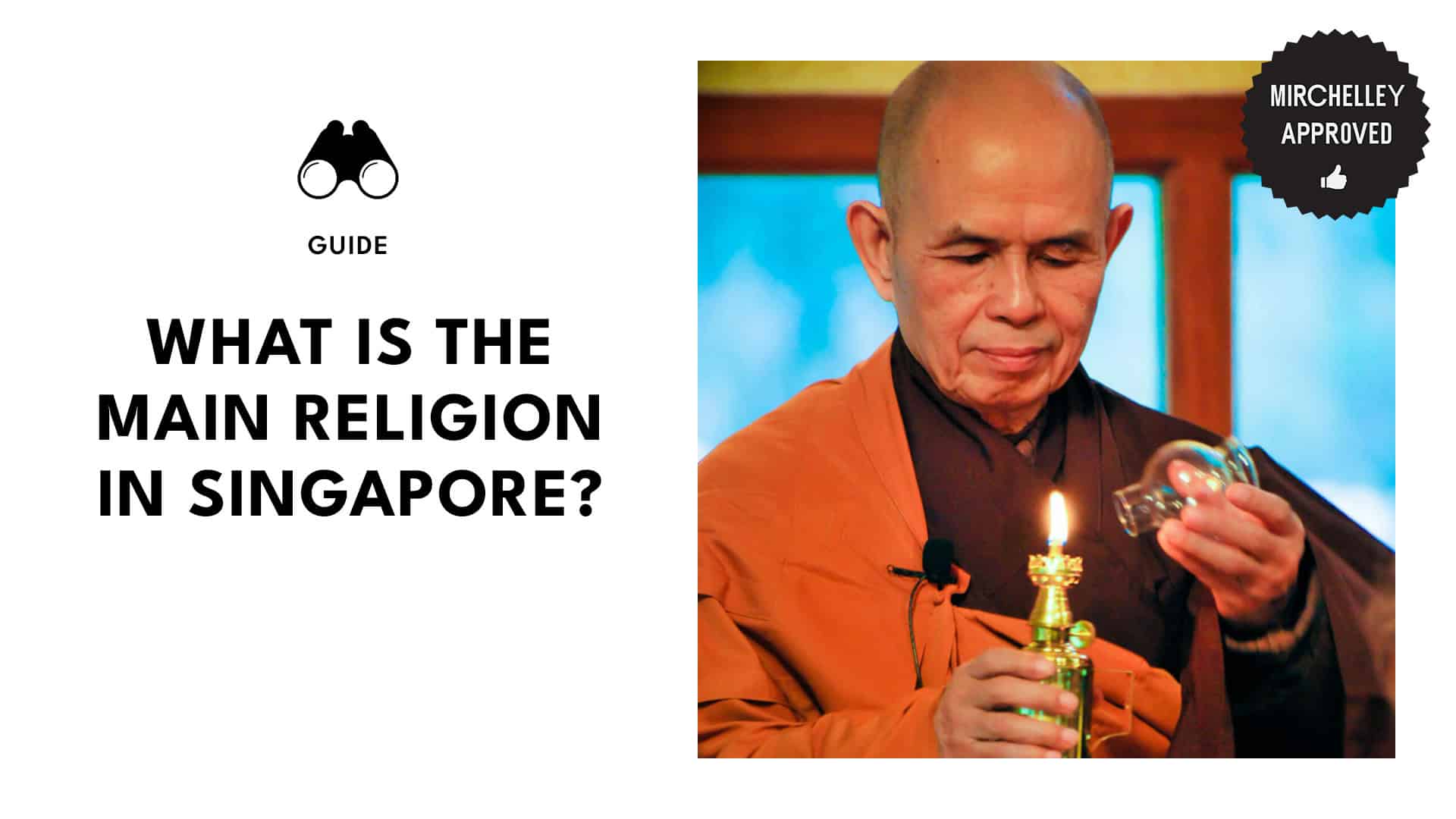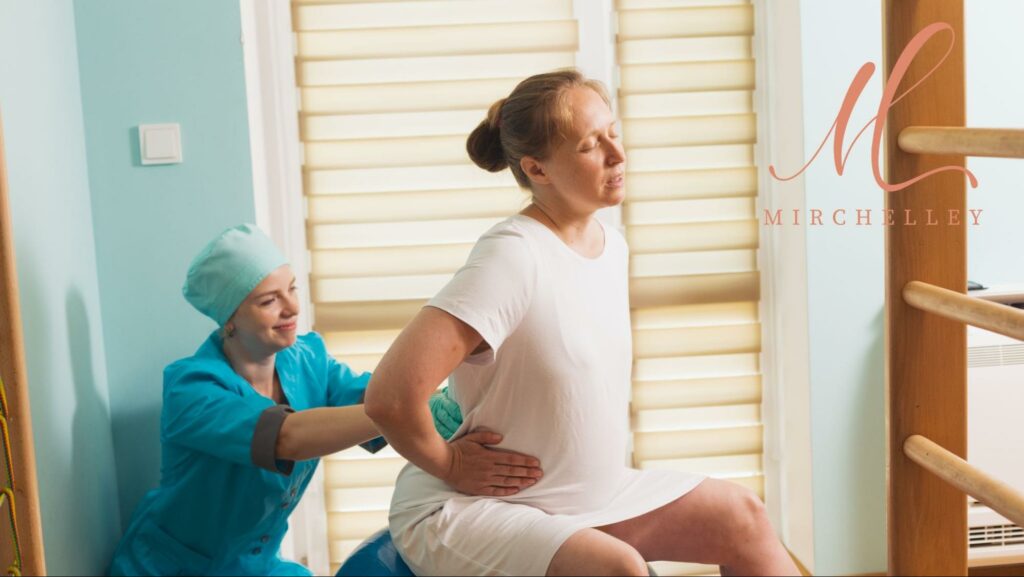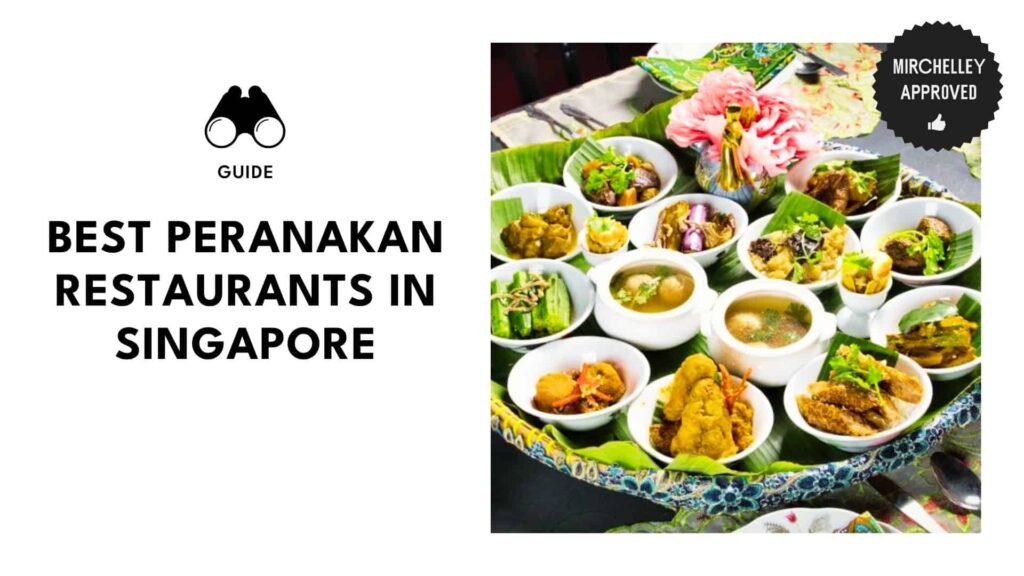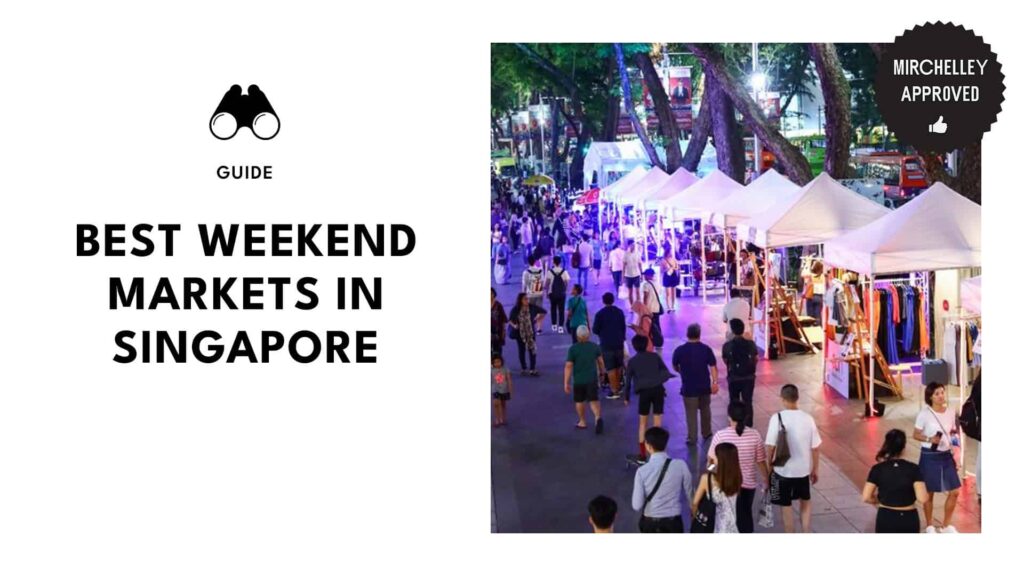Categories > Guides and Tips

A Quick Look at Singapore’s Main Religion and Why It’s Still So Influential
When we talk about Singapore, it’s easy to get caught up in the food, the skyline, or the endless list of things to do. But one part of life here that shapes almost everything is religion.
During one of our team catch-ups, someone mentioned how surreal it felt to pass a Buddhist temple and then walk into a modern office building just around the corner.
That moment stuck with us because it captures what life in Singapore is like: tradition and modernity, side by side.
So we decided to dig deeper. What is the most practiced religion here? How visible is it in everyday life? And if you’re new to Singapore or just curious, what should you know to better understand its spiritual fabric?
Here’s your go-to guide to Buddhism in Singapore—complete with stats, temple tips, and a closer look at how this faith continues to form the Lion City.
What is the main religion in Singapore?
Buddhism remains the most commonly practiced religion, with 26% of adults identifying as Buddhist.
This is followed by Islam (18%), Christianity (17%), Hinduism (8%), and Chinese traditional religions such as Taoism or Confucianism (6%). Another 4% follow other faiths, including Indigenous religions.
What stands out most is that 22% of Singaporean adults say they have no religious affiliation, a figure significantly higher than most other Asian countries.
In contrast, Malaysia, which once included Singapore, reports just 2% of adults as unaffiliated. This puts Singapore among the most secular-leaning nations in the region.
Are Singaporeans still religious today?
Religion remains an important part of Singaporean life, but trends show that this is gradually shifting.
According to the Department of Statistics, the proportion of residents who identify as having “no religion” has increased to 20% as of the 2020 Census.
This secular shift is especially evident among younger adults aged 15 to 24, who are more likely to embrace a personal belief system outside of institutional religion or opt out entirely.
However, this doesn’t mean religion is disappearing. Religious groups like Buddhists, Muslims, Christians, and Hindus continue to play strong roles in both community and family life.
Rituals, spiritual guidance, and communal support remain central for many Singaporeans, especially among older generations. The mix of secular and devout outlooks is now part of Singapore’s evolving cultural identity.
Where can you see religion in daily life in Singapore?
Religion in Singapore is built into the rhythm of everyday life. From early morning prayers to festive street parades, spiritual practices are visible across the island.
Whether you’re walking through a busy market or riding the MRT, signs of faith appear everywhere in small but meaningful ways.
You’ll often encounter:
- Daily rituals in temples and shrines, such as incense offerings and bell-ringing
- Friday congregational prayers at mosques, with streets around some mosques temporarily closed to accommodate worshippers
- Sunday services at churches, often accompanied by music and fellowship gatherings
- Hindu processions and festivals, especially during Thaipusam and Deepavali
- Prayer rooms in malls, offices, airports, and schools, supporting Muslim and other religious communities
Is there a holiday dedicated to Singapore’s main religion?
While Singapore celebrates religious festivals from multiple faiths, Vesak Day is the main Buddhist holiday officially recognized as a public holiday. It commemorates the birth, enlightenment, and passing of the Buddha.
This is marked by:
- Offerings of flowers, candles, and fruit at temples
- Acts of generosity, like blood donations or feeding the poor
- Chanting sessions, blessings, and candlelight processions
During Vesak Day, temples such as the Buddha Tooth Relic Temple and Kong Meng San Monastery welcome thousands of devotees.
While it’s primarily a Buddhist event, it’s also common for non-Buddhists to participate as a sign of respect and cultural appreciation.
Buddhist Sites to Visit in Singapore
Buddha Tooth Relic Temple
Media credit: @btrts_singapore
Instagram: https://www.instagram.com/btrts_singapore/?hl=en
Website: https://www.buddhatoothrelictemple.org.sg/
Address: 288 South Bridge Road
Contact: +65 6220 0220
Business hours: Daily – 7 AM to 5 PM
With its red-and-gold exterior and Tang dynasty-style architecture, the Buddha Tooth Relic Temple feels like a spiritual anchor right in the middle of Chinatown. It houses what is believed to be a relic of Buddha’s tooth, encased in a stupa made of gold.
More than just a temple, it includes a museum, cultural exhibits, and even a rooftop garden with a giant prayer wheel.
You can also just walk in and observe daily rituals, admire the calligraphy panels, or simply sit quietly among the flickering oil lamps.
Lian Shan Shuang Lin Monastery
Media credit: @shuanglinmonastery
Instagram: https://www.instagram.com/shuanglinmonastery/?hl=en
Website: https://www.shuanglin.sg/
Address: 184 Jalan Toa Payoh
Contact: +65 6259 6924
Business hours: Daily – 8 AM to 5 PM
Founded in 1902, Lian Shan Shuang Lin is Singapore’s oldest Buddhist monastery and one of the few remaining places that follow traditional southern Chinese monastic design. It was declared a national monument in 1980.
Hidden inside Toa Payoh, this place is tranquil and beautifully preserved. The grounds feature a courtyard, prayer halls with dragon pillars, and a serene pagoda garden.
Despite its quiet setting, it remains an active monastery, and monks can often be seen performing daily chants or caring for the grounds.
Kong Meng San Phor Kark See Monastery
Media credit: @kmspks_monastery
Instagram: https://www.instagram.com/kmspks_monastery/?hl=en
Website: https://kmspks.org/
Address: 88 Bright Hill Road
Contact: +65 6849 5300
Business hours: Daily – 8 AM to 4 PM
Spanning more than 75,000 square meters, Kong Meng San is the largest Buddhist temple complex in Singapore. It houses multiple halls, a crematorium, a columbarium, and even a Bodhi Tree descended from the original in Bodh Gaya, India.
You’ll see how the main prayer hall features a 13.8-meter Buddha statue, and during Vesak Day, the entire complex becomes a hub of celebration, attracting thousands of devotees.
It’s also a key center for Buddhist education and community outreach. On weekends, you’ll find Dharma talks, meditation classes, and community events.
Wat Ananda Metyarama Thai Buddhist Temple
Media credit: @nanay_au
Facebook: https://web.facebook.com/Watananda/?_rdc=1&_rdr
Website: https://watananda.org/
Address: 50B Jalan Bukit Merah
Contact: +65 6276 9646
Business hours: Daily – 6:30 AM to 8 PM
Wat Ananda Metyarama was founded by a Thai monk with support from the Thai royal family. It combines a traditional Thai shrine hall with a modern extension built in 2014.
The temple serves the Thai and Thai-influenced Buddhist community in Singapore, with monks in saffron robes living on-site.
Visitors are welcome to join in the morning alms rounds, watch prayer rituals, or simply enjoy the calm, open-air design of the compound.
Sakya Muni Buddha Gaya Temple
Instagram: https://www.instagram.com/sakyamunibuddhagayatemple/
Facebook: https://www.facebook.com/SakyaMuniBuddhaGayaTemple
Address: 366 Race Course Road
Contact: +65 6294 0714
Business hours: Daily – 8 AM to 4:30 PM
Often called the “Temple of a Thousand Lights,” Sakya Muni temple was founded in 1927 by another Thai monk and is most known for its towering 15-metre seated Buddha statue surrounded by oil lamps and murals.
It brings Thai and Chinese architectural influences together, creating a richly decorated yet inviting space.
If you visit, you’ll be able to observe rituals, offer flowers or fruits, or simply admire the interior, which comes alive during Vesak Day with candlelight and chants.
Kwam Im Thong Hood Cho Temple
Media credit: @amflamini
Facebook: https://www.facebook.com/kwanimthonghoodchotemple/
Address: 178 Waterloo Street
Email: [email protected]
Business hours: Daily – 7 AM to 6:30 PM
Located in Bugis, Kwam Im Thong Hood Cho is one of Singapore’s most actively visited temples, especially among devotees of Guan Yin, the Goddess of Mercy. The temple has become known for its strong association with compassion and healing.
As a result, it continues to hold deep spiritual meaning across generations, making it one of the most culturally significant landmarks in the city.
Visitors often come to draw divination sticks, offer lotus flowers, or light incense for guidance. Even with its modest footprint, these daily rituals keep the temple at the heart of Singapore’s spiritual and cultural life.





